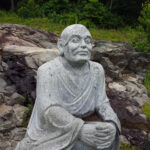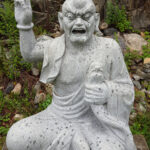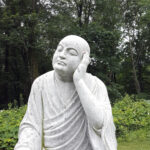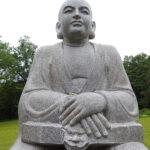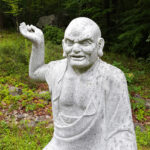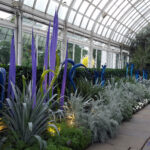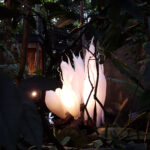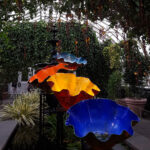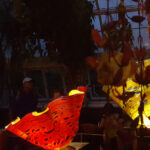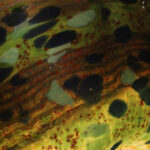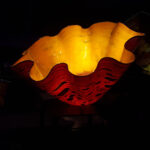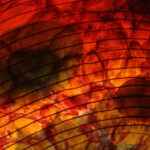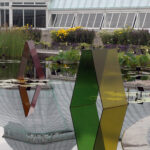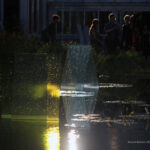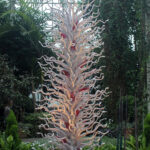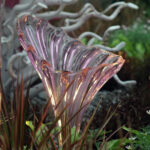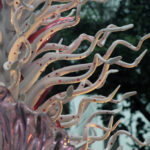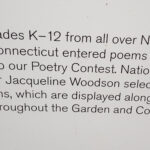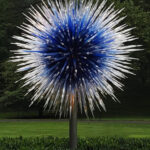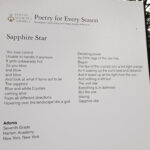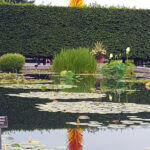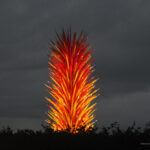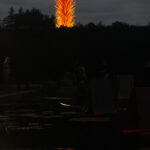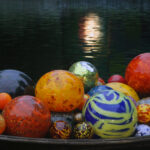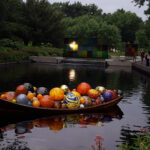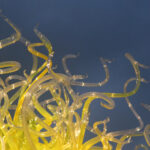So fellow travelers, I can think of no better way to end a road trip than a day of visits with friends. My trip concluded with two days of such joys and I headed homeward filled with gratitude and a haiku in my heart
 Hugs lunch and laughter
Hugs lunch and laughter
Tales of music grandkids dogs
Blessings of friendship
I arrived home in time to take my dog for a sunset walk. It was good to be home, carrying a journal of notes and a portfolio of photos to sort through. Fodder waiting to form what became this series.
Writing and discovering the feelings embedded in the images I take helps me process my experiences. It is extremely difficult for me to weave together the narrative which creates the essence of the experience without sounding pretentious or full of hollow platitudes and trite banalities.
Take for example my experience with the Buddha at Chuang Yen Monastery. When the experience began to crystalize into thoughts I could communicate I struggled with finding the words to do so. I write often about seeking peace, finding joy, embracing hope and the Zen moments when I feel Light within me responding when I find them. Honestly those moments are as fleeting and transient as the Light which inspires my photography.

Most of the time I stumble through the commonplace pitfalls of getting through a day. Often I get stuck simply trying to get out of my own way. Oh there have been periods of serenity and balance, times of joy and deep contentment; I am blessed that they are becoming more frequent and inspiration is less elusive. Still a profound moment of near transcendence as I lived in the hall of the Great Buddha at Chuang Yen Temple is an exceedingly rare gift, something genuinely beyond description. I hope I did it justice.

On the last morning of my road trip, which was a Sunday, I attended morning worship at Rupert United Methodist Church where my friend Tom Atkins is minister. It is a beautiful church with a small congregation of kind hearted people who are even more beautiful. Tom’s sermons are more spiritual encouragement and thoughtful discourse than exhortations for repentance. If you have read any of his blog posts* which I have shared here, you have a sense of his honesty, deep reasoning and lively sense of humor. He brings all that and more to his services at Rupert UMC.
By grace and good fortune, his talk that Sunday focused on the parable of seeds, a fitting reflection on the many kernels of insights I had gathered on my road trip. The biblical narrative tells of seeds, scattered on different ground, some landing on rocks, others on dry soil, others sprout but are choked by weeds and some land in just the right conditions to sprout, grow and bear fruit. Tom spoke about applying these analogies to our own spiritual environment. I saw rocks as hard and unrelenting anger, weeds as the habits which crowd out our potential and dry ground as fear which kills before inspiration can take root. Tend to the condition of your spiritual dirt, Tom said, and you will find the seeds scattered your way will bring a plentiful harvest. He had a flat of bright red salvia plants, end of the season “discards” from a local garden shop which he encouraged us to take home to plant as symbols of our committment to attending to our inner gardens.
Now I have several plants tucked in special spots around my pond and in my little herb garden, reminders of the gifts of friendship and the simple wisdom in the parable of the seeds. I sense there are many seeds gathered into my inner garden which will bear harvest throughout the coming year. There will I hope be much to share. Thanks for reading.
Walk gently on the path my friends and may adventure find you ready.
*Editors note: You can follow Tom’s blog on wordpress here.






